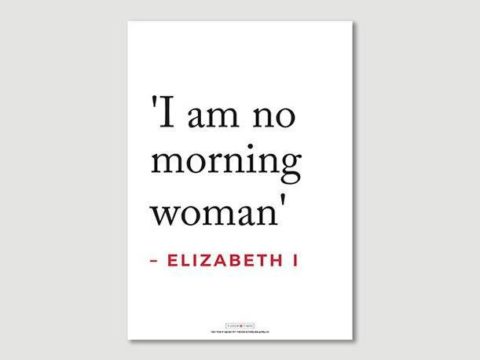Anne of Denmark: Life Story
Chapter 13 : Loss
In late 1612, Anne suffered the greatest grief of her life. Her eighteen year old son, Henry Frederick, Prince of Wales, died. The Prince had been hugely popular with everyone who knew him, and both his parents were devoted to him. He had been created Prince of Wales with much fanfare in 1610, and the succession to the crown looked the safest it had been since before the Wars of the Roses. Henry shared his mother’s interest in theatre and commissioned masques similar to hers.
The King, Queen and Prince had all been together at Woodstock in the autumn, following their different progresses around the country and they had then returned to London to meet yet another foreign guest, Frederick V, Count Palatine, who had come to court Princess Elizabeth. It was during October of the year that Henry complained of headache, lassitude, stomach upsets, intermittent fevers and other symptoms. Blood-letting was prescribed, along with the usual unpleasant medicines of the time. As the symptoms were intermittent, he played tennis one day, and caught a chill. Twelve days later, his father was sent for, with the news that the Prince was unlikely to recover.
Neither Anne nor James were at Henry’s bedside when the end came, probably because contagion was feared – Princess Elizabeth was also banned, despite his plea to see her. The clearest sign that James and Anne were no longer close is that James retired to Theobalds to mourn, and Anne to her London home, Somerset House.
Elizabeth’s marriage to Frederick proceeded. Anne was not considered to be very much in favour of it – possibly because Elizabeth’s rank as merely the wife of an Elector of the Holy Roman Empire would be lower than as a queen – however, there were not many Protestant Kings available. The marriage was celebrated at Whitehall the Sunday before Lent. Anne wore white satin, embroidered and ornamented with diamonds, wearing jewels that were valued at £400,000, but there is no record of the bride’s costume. The ceremony was followed by several days of masques, fetes and fireworks.
On 25th April, Anne was obliged to part with another child, as Elizabeth and her new husband sailed for home. His territory was a loose agglomeration of fiefdoms centred around Heidelberg in south-west Germany.
Anne then made a stately progress to Bath, where it was hoped that taking the waters would restore her health, which had suffered from the loss of Henry and the parting with Elizabeth.
In 1613, the court was rocked with scandal when Lady Frances Howard, daughter of the Earl of Suffolk, and wife of the Earl of Essex, had her marriage annulled on the grounds of non-consummation. Following a case which the modern tabloid papers would blush to report, her application was granted, and she married James’ favourite, Rochester, who was now promoted to the Earldom of Somerset.
Anne, having been Somerset’s enemy for years, announced that she would grace the marriage with her presence, suddenly changed her mind, unless she could take possession of the lodge at Greenwich. This lodge was in the hands of Lady Frances’ great-uncle, the Earl of Northampton. Anne disliked Northampton, whom she believed had insulted her brother, King Christian, during his visit in 1606, and this was a good moment to get her way. Northampton was obliged to yield. He wrote to Somerset:
‘Since the Queen, inflamed with passion and rage, should, out of her hatred of me, disorder the main state of the roceedings as they stand now and distemper you, rather than this tempest should be raised to your prejudice….She would fall again to railing publicly as at this instant she doth still privately. She would with rage and fury put all forms out of frame.’
But Anne was not the influence she had once been. James confirmed Northampton in his ownership, and persuaded Anne, or commanded her, to attend the wedding. She not only did so, but took part in the masque, and led the dancing.
In 1614, Anne was cheered by the news of the birth of a son to Elizabeth, named for the late Henry Frederick, and also by a second visit from her brother, King Christian. The visit was a complete surprise and gives a little insight into family relationships. A French messenger arrived at Somerset House and told Anne the Christian was approaching. She thought it was a bad joke and ‘scorned him’. Shortly after, Christian entered the room behind her, and warning everyone to be silent with ‘a becking of his hands’, crept up to Anne, put his arms around her and kissed her, probably saying ‘Guess who?’.
Anne was delighted – she gave a valuable jewel to the servant and sent a message to James immediately. As before, Christian was entertained with hunts, with bear-baitings, running at the ring and other games as well as hard drinking sessions between the two kings who were notorious for the amount of alcohol they could consume. No state reasons were given for the visit, although it was hinted that it might relate to plans to marry Prince Charles, now Prince of Wales, to a Spanish princess.
Anne of Denmark
Family Tree




